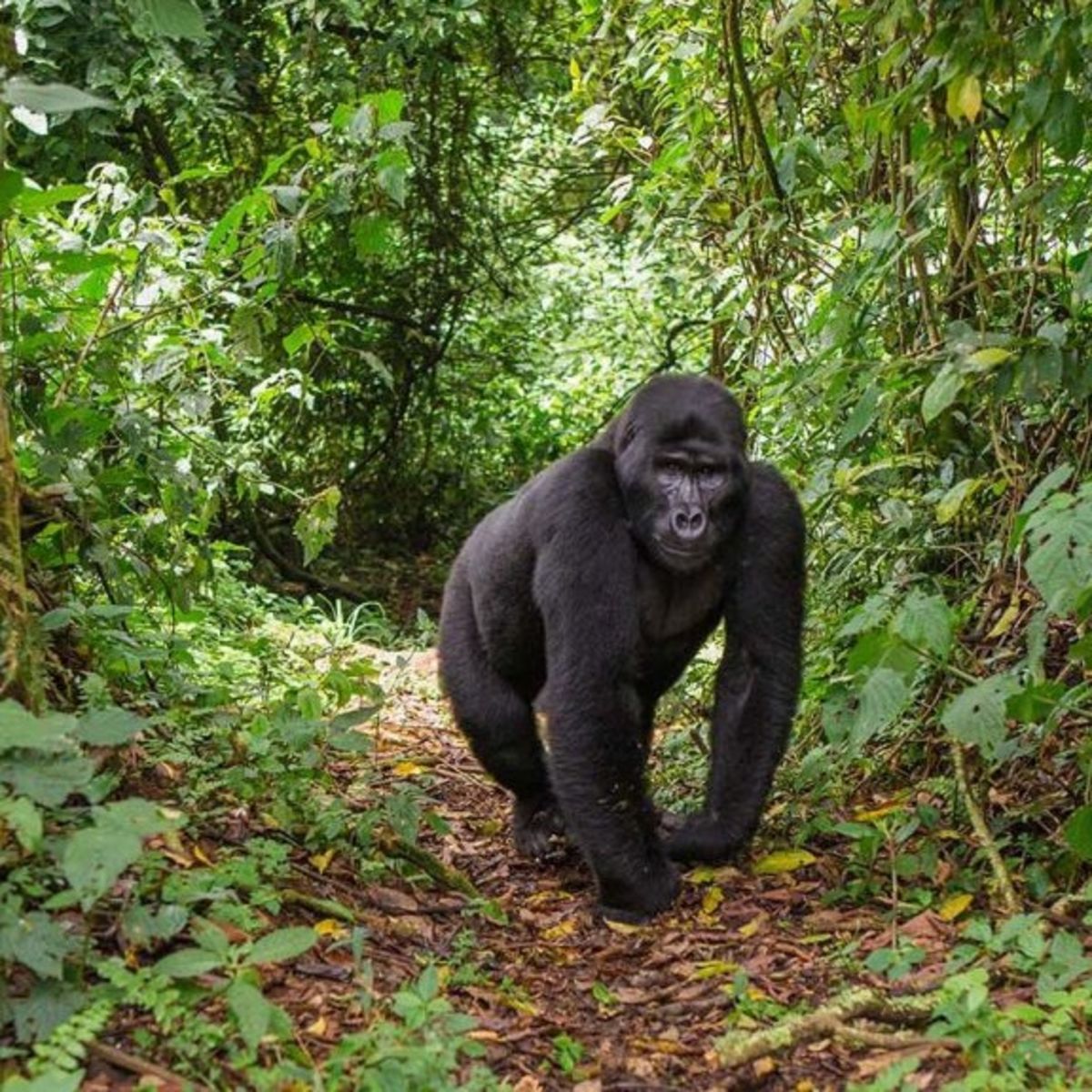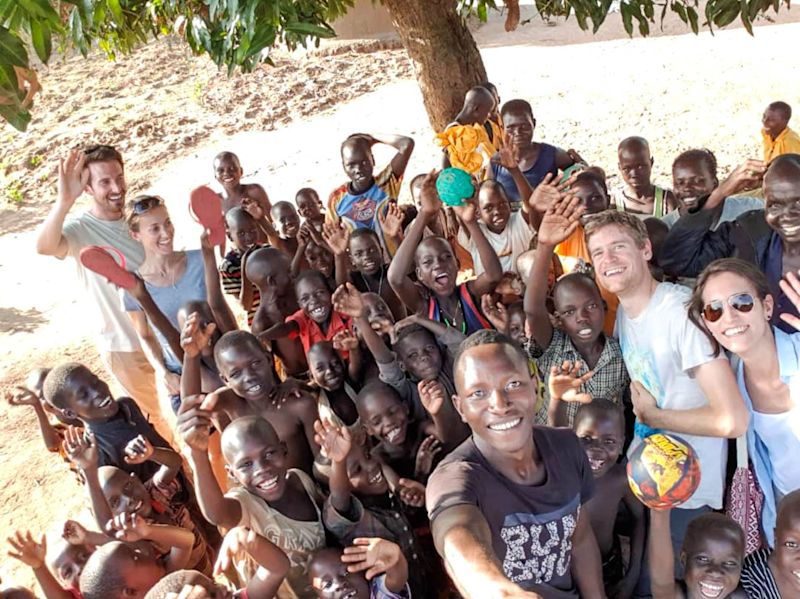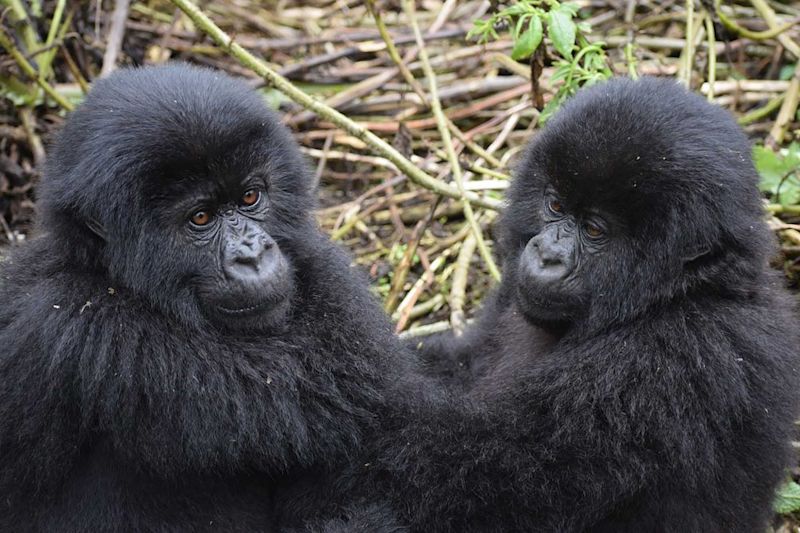The plight of mountain gorillas
In the 1960s, American primatologist Dian Fossey was in East Africa studying mountain gorillas and pioneering conservation efforts on their behalf. At the time, there were only around 240 mountain gorillas left in the wild. Her work was absolutely integral in bringing the plight of mountain gorillas to the attention of the international community.
In the mid twentieth century, there were fewer than 250 mountain gorillas left.
Rwanda and Uganda respond to the crisis
In the 1990s, the Government of Uganda responded to the mountain gorilla crisis by creating Bwindi Impenetrable National Park and Mgahinga National Park in the southeast of the country as protected habitats.
The Government of Rwanda similarly created Volcanoes National Park, which sits on the border with Uganda and shares an ecosystem with Mgahinga National Park.
These three parks offer a safe haven for mountain gorillas, protecting them from poachers, habitat loss and farmland encroachment.
Gorilla trekking is born
After the creation of these parks, a few of their gorilla troops were put through the process of habituation, which is where they troops are slowly introduced and made used to the presence of humans.
This habituation was undertaken with tourism in mind, because once the troops were habituated (the process takes a couple of years), visitors trekking to see the gorillas in the wild became possible.
The conservation of the mountain gorillas has in large part been a success story. Today, there are just over a thousand mountain gorillas in the wild – a fourfold increase from their mid-twentieth-century numbers.
Gorilla numbers are on the rise and currently number around a thousand individuals. While this is great achievement, it's not yet time to sit back and relax.
Gorilla conservation creates jobs
Lodges have opened around the national parks to accommodate tourists, and these establishments provide jobs for the local communities. Some former gorilla poachers have actually become rangers and trek porters, helping to transform the local attitude towards these gentle giants.
Some of the lodges servicing gorilla trekkers also run community upliftment initiatives, which is wonderful – we're talking funding local schools and clinics, and the like.
Funds from gorilla trekking aid community development schools
Yes, it has also displaced communities
The creation of mountain gorilla sanctuaries has not been without controversy. This is because many Batwa – a marginalised people group – were forced out of their ancestral homelands to create the parks. These Batwa lost not only their land but also their traditional way of life, as they relied on the forest habitats that were taken from them for hunting and gathering.
Many of the Batwa have been forced into poverty through the creation of the gorilla parks. While it's not a perfect solution, we recommend that gorilla trekkers make an effort to go on a paid visit to a local Batwa community; not only will you learn about their story and traditions, your money also helps to support them.
If you'd like to know more about the Batwa, their situation and how you can help, please visit their profile page on the Minority Rights Group International website.
The Batwa of Uganda make up just 0.2% of the country's population
Pricey permits limit numbers and aid conservation
In recent years, mindful travellers have become increasingly conscious of the ethical issues that surround the 'wild animal encounters' tourism industry. It's important therefore to note that trekking to see the gorillas does not fall within this designation. When you trek to see gorillas, you're trekking to see a troop of gorillas that has been habituated. The ranger leading your gorilla trek will have built up a relationship with the wild gorilla troop being visited, and so he or she knows how to conduct the meeting safely.
The authorities in both Rwanda and Uganda require visitors to obtain trekking permits to be allowed to visit a gorilla troop. These permits generate income to provide for the parks' many duties, which include anti-poaching efforts and forest management. Expensive permits also limit the number of visitors required to meet these financial needs. Fewer trekkers means less disruption to the daily lives of the gorilla troops. Each gorilla troop is only visited for one hour per day.
Gorilla trekkers and their guide about to set off into the jungle
Current threats to mountain gorillas
There are still some very real threats to the longevity of mountain gorillas. Three of the biggest threats are:
1. Disease
One of the biggest threats to mountain gorillas is disease. Mountain gorillas can catch human diseases, so if you have a cold or are ill, you won't be allowed to trek to see them. Also, all trekkers must maintain a distance of at least three metres from the gorillas to try to avoid the spread of any disease.
2. Poaching
Human-wildlife conflict is still a problem in East Africa. Poaching is major threat to mountain gorillas, as these primates are prized as bushmeat and for use in the traditional medicine trade.
3. Deforestation
Deforestation – for the sake of further human settlements and farmlands, as well as climate change – is yet another threat to the continued survival of mountain gorillas.
Gorilla numbers are on the rise, but they still face many threats
Gorilla trekking is therefore a good thing in terms of mountain gorilla conservation. Their numbers will hopefully continue to increase, with gorilla trekking fees helping to fund this important endeavour.









